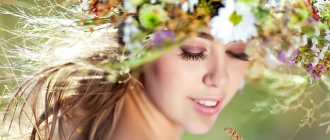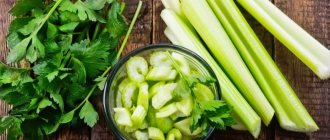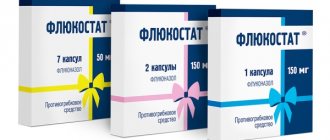Hair coloring during pregnancy
If a woman often changed her hair color before pregnancy, then while carrying a baby she will also want to continue experimenting with her own appearance. This is especially true for those expectant mothers who naturally have one hair color, but were dyed in the opposite color. After all, few girls would want to walk around with grown roots that differ from the main shade of their hair, since such an appearance seems sloppy to most people.
If you ask a gynecologist for advice, you are unlikely to hear a unanimous opinion on hair coloring during pregnancy. Old-school gynecologists advise holding off on changing the color of your curls, while those who are younger will say that there is nothing wrong with this. The main thing is to try not to overdo it with paint, and if a small amount of it gets on the scalp and then moves into the blood, it is unlikely to have a negative effect on the fetus. But still, you shouldn’t change your hair color every month, and if you want to dye your curls, you should turn to professionals and not do it yourself at home.
When dyeing your hair, you should give preference to a dye that does not contain ammonia, since its vapors have a strong toxic effect. Ammonia can cause headaches, dizziness, in some cases there is an increase in blood pressure, and sometimes even watery eyes.
But expectant mothers suffering from toxicosis find it difficult to tolerate dyeing their hair with any dye. Therefore, when buying hair dye, you should pay attention to the fact that the box contains an inscription about the absence of ammonia.
Remember, the packaging of inexpensive paints may say that it does not contain ammonia, but this may not be the case. It is advisable to purchase hair dye in specialized stores and well-known manufacturers, only in this case can you be sure of the quality of the product.
Experts recommend refraining from dyeing your hair until 12 weeks of pregnancy, since during this period the fetus is actively developing, while the placenta weakly protects it, which means there is a risk of causing a negative impact on the condition of the child.
If the expectant mother is wondering whether it is possible to dye her hair during pregnancy, then she should know one more feature of the change in the color of curls at this time. After dyeing her hair, a woman may not always get exactly the result she was striving for. This is due to the fact that during pregnancy, hormonal levels and various other changes in the body change, as a result of which the hair structure may change. For this reason, expectant mothers have to select new hair care products.
Minuses
There are not many disadvantages of henna. Naturally, allergic reactions may occur to it. To exclude them, perform a test before painting: dilute a little henna in water and apply it to the inner surface of the wrist or elbow.
Then wait 40 minutes and wash it off. If you have an allergy, it will manifest itself within 24 hours: a rash or redness will appear on the skin at the site of application, it will begin to itch, peel, and possibly a burning sensation.
More on the topic: Can a nursing mother sunbathe?
If such manifestations do not occur, you can safely dye your hair with henna: you do not have an allergy.
Another circumstance: henna has a very high coloring ability, so when working with it you should be careful and wear gloves. After all, if henna gets on the skin of your hands, face or neck, it will certainly leave bright orange marks, which will be very difficult to wash off. You shouldn't use henna too often.
Otherwise, it will dry out the scalp and make the hair thin and coarse. They will be difficult to comb. Henna should not be combined with artificial dyes or applied to previously colored hair. This may result in unpredictable color.
And if after dyeing with henna you are not happy with the result, this cannot be corrected: henna holds very tightly, and other pigments simply will not be able to penetrate inside the hair. You'll just have to wait until she washes herself.
Natural dyes for hair coloring during pregnancy
There is always a way out. If you are afraid that after dyeing, instead of blonde, you will become red or acquire a different shade of hair, then in this case you can use natural dyes. These include chamomile, walnut and regular onion peel. You can also use basma or henna.
Henna and basma can be found in any store or pharmacy at a very affordable price. To obtain a composition for hair coloring, you need to dilute a packet of dye in water; the correct dosage is indicated on the package. Henna will give your hair a red tint, and basma will make your curls dark or with a plum tint. The final result depends on how long the dye remained on the hair and on the structure of the hair itself. You can experiment with color; to do this, you need to dye one strand and wait a while. It should be remembered that after dyeing with henna and basma, ordinary hair dye may not always give results, or the color may appear in places and unevenly.
If you want to achieve a golden hue in your hair, then you need to take a few large spoons of chamomile, add a small amount of water to them, put on fire and boil for 30 minutes. After this, strain the mixture through cheesecloth and rinse your hair with it. You cannot dry your curls with a hairdryer; you need to wait until they dry naturally. The effect of the procedure will be noticeable in fair-haired girls, but to achieve the result, several rinses will be required until the desired effect is achieved.
Advantages and disadvantages of henna
First, let's figure out what henna actually is.
Henna is a dye that is obtained from the dried leaves of the lawsonia shrub. This plant grows in hot eastern countries; it is also found in Africa.
So henna is a completely natural and very safe product. She dyes her hair a beautiful red color with a copper or golden tint.
It should be noted that in addition to coloring henna, there is also a colorless powder that is used only for medicinal purposes.
Reviews
Albina, 25 years old
Before pregnancy, I dyed my hair monthly. While pregnant, I thought for a long time about whether I should dye my hair and how it would affect the child. I dyed my hair a couple of times, and it didn’t affect me or the baby in any way.
Katya, 31 years old
I love experimenting with my appearance. And pregnancy doesn't stop me. I've already dyed my hair 3 times, but I'm not happy with the results. Instead of the stated curls, like on the dye packaging, I ended up with pink hair. Hormones are acting up, as I understand. Now I’m waiting for the birth so that I can get myself in order after it.
Remember, if you are afraid of harming the baby in the womb, then it is better to refrain from dyeing your hair for the entire period of pregnancy. And you will always have time to become beautiful after giving birth.
- Related Posts
- Linden flowers during pregnancy
- Why is Curantil prescribed during pregnancy?
- What not to do during pregnancy
« Previous entry
Is it possible for pregnant women to dye their hair with henna in the early and late stages?
Changes in a woman’s condition during gestation occur due to a complete restructuring of the body. This is due to a large release of the “female” hormone estrogen and the “male” progesterone, which is responsible for maintaining pregnancy.
In most cases, skin problems and deterioration in hair quality are observed in the first trimester. Due to increased secretion of sebum, strands take on an unkempt, greasy appearance.
Or, conversely, with “pre-pregnancy” dryness, increased fragility of curls occurs. Catastrophic hair loss is often observed.
Such manifestations are associated with the body’s adaptation to a new state, early toxicosis.
The formation of internal resources and the formation of the baby’s systems takes place. Therefore, the female body uses all its reserves in the form of vitamins, nutrients and minerals to support the viability of the embryo.
In the second and third trimesters, the pregnant woman’s condition is more stable, the fetus is almost formed. A woman's appearance changes for the better.
The situation may be different with complications, long-term or late toxicosis. The level of stress metabolites during problematic gestation goes through the roof, which has an aesthetic impact on the pregnant woman.
From a medical point of view, it is strictly not recommended to dye your hair with henna in the first trimester of gestation.
The development of a tiny embryo inside the womb is a delicate process that requires the utmost care. No one knows exactly what effect this or that substance can have on the formation of organs.
In the second and third trimesters, doctors do not find any contraindications to the use of natural dyes, including henna dyeing.
The exception is cases of complicated pregnancy, which are accompanied by gestosis, dehydration, hypoxia, metabolic disorders and other changes.
Is dye harmful for pregnant women?
Coloring is an individual matter; the acquired color depends on the internal processes in the woman’s body. Therefore, hairdressers do not recommend experimenting with color for the first time during pregnancy: the result may be negative. Increased hormonal levels, increased sweating, allergies - this is not the entire list of factors that can affect color. The reaction can be the most unexpected, because changes in the body and increased levels of any hormone can turn a blonde into a redhead!
Some doctors prohibit coloring due to substances contained in cosmetics, including:
- Resorcinol is a highly allergenic drug that reduces immunity, causing undesirable reactions from the mucous membrane and skin.
- Hydrogen peroxide. Its use is accompanied by an increased threat of allergies and negative effects on the skin.
- Ammonia. The pungent odor of this substance causes headaches and nausea.
- Paraphenylenediamine is an activator of inflammatory processes.
Some women refer to the opinion of those doctors who emphasize the absence of proven harm from paint. They believe that the placenta protects the baby from negative environmental influences, and the amount of chemicals that enters the blood of a pregnant woman through the skin cannot harm him. This applies to the vapors of substances contained in the paint, and those components that enter the bloodstream when the drug comes into contact with a woman’s skin.
Is it possible to paint with ammonia-free paint?
If you don’t know whether to dye your curls or not, you can use ammonia-free dye, for example, “Garnier” or “Estelle”. Modern technologies allow you to change color without the use of toxic and dangerous substances! This type of painting will not give a long-lasting color, as it simply stains, but does not penetrate inside. But your strands will look well-groomed and beautiful.
Tinted balm
If you are concerned about your own well-being and the health of your unborn child, and you cannot decide whether pregnant women can dye their hair, we recommend using a safe coloring method that does not have such a strong effect on the body. Among such products there is a tint balm. It will help to gain additional shine and strength without harming the fetus. You can buy this product at a pharmacy or store that sells hair care cosmetics. The main thing is to make sure that the chemical composition of the product is safe and does not contain ammonia.
Tinted shampoo
Also an absolutely safe hair dye for pregnant women is a tinted shampoo, which is sometimes called a balm. It is applied to the hair, and after rinsing it leaves a tint, the intensity of which depends on the manufacturer of the shampoo, as well as the natural color. There are very few substances that give the desired shade in such products, so it is absolutely harmless to wash your hair with it every three days, especially since your hair will look almost flawless after that.
Tonic
Hair dyeing with tonic is another good and completely harmless alternative to dyeing in a salon. This procedure will perfectly cope with gray hair and give your hair the desired shade. This coloring method has only one negative side - a short period of validity. With intensive washing, the tonic, as well as shampoo and conditioner, is quickly washed off, and the hair loses its chosen tone.
Henna
To dye their hair, pregnant women can use a traditional dyeing method - a substance called “colored henna”. This is a safe and natural dye that can provide a healthy color and not harm the expectant mother. Henna comes in a wide variety of shades, but to prevent dull hair, it should be used no more than once a month. The result of the procedure will pleasantly surprise you, because henna contains high-quality dye! Here are some ways to color your hair with henna:
- To obtain a bronze color, mix henna with water in a ratio of 2 to 1. Apply the warm solution to your hair and leave for 30 minutes.
- If you dream of dark hair, you will need a mixture in a 1:1 ratio. Measure the amount of powder accurately.
- A mixture of cocoa and henna in a ratio of 3-4 teaspoons per 1 bag will give a mahogany shade.
- Owners of red and light brown hair can use a decoction with a combination of henna and coffee (2 tsp), this will give their hair a natural color.
Basma
A woman who is expecting a baby can use basma to dye her hair. This is another natural dye with which you can get a lasting effect. But if you paint only with basma, you are unlikely to get the desired color. It may turn out bright blue or green. If such exoticism is not for you, mix basma with henna. By adhering to certain proportions, you can achieve the desired result. There are two ways to dye hair with basma:
- Two-phase. First, the hair is dyed with henna. After approximately 30 minutes, the hair is washed and basma dye is prepared. The solution must be brought to a boil, and during the dyeing process, constantly add hot water, since basma thickens quickly. After 10-15 minutes, the paint is washed off.
- Mixed. Basma is mixed with henna at the very beginning. It is important to accurately calculate the proportion to get the desired color. For example, using 16 g of henna and 9 g of basma will give a chestnut color, and the opposite proportion (9 g of henna and 16 g of basma) will give a black tone.










